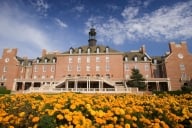You have /5 articles left.
Sign up for a free account or log in.
As media response and alumnae outrage grew after last week’s announcement that Sweet Briar College will soon close its doors, the focus of the debate centered around whether the college leadership was courageous in seeing a dismal future and responding promptly, or precipitous in abandoning hope before it was truly necessary. No matter the answer, it seems obvious to an outside observer that Sweet Briar could have taken greater advantage of fundamental marketing principles and more effective student recruitment strategies as administrators considered this decision.
Only independent research, both quantitative and qualitative, can provide a true road map for success. It’s hard to know what kind of research the college had about students, parents and alumnae -- and how to attract their engagement and support. I do know that as recently as 2010, Forbes put the college near the top of a list of higher ed institutions facing financial problems, based primarily on successive years of operating loss. (The college’s PR man at the time dismissed the analysis as “selective and unscientific.") The numbers weren’t lying, and a five-year window is sufficient to explore a lot of alternatives.
Sweet Briar, and colleges like it, must accept what research is telling them. And then use every tool in the toolbox to improve appeal, value, reach and yield.
A number of colleges have been and are being successful in the market conditions Sweet Briar leadership articulated as those that required its closing. The Seven Sisters colleges remain highly selective, boast exceptional alumnae support and continue to invent their way into a vital future while maintaining, for the most part, their single-sex character. Many liberal arts colleges -- Grinnell and Kenyon spring immediately to mind, as do Bowdoin, Beloit and College of the Ozarks -- don’t let their rural locations inhibit their success.
But Sweet Briar came to the conclusion that the writing on the wall said, “Enough!” What data drove this decision? What futures were imagined -- and researched -- that led to an inescapable conclusion that closing was the only option? With the level of alumnae outrage -- signaled by more than $2 million in pledges as of this writing -- greater transparency around the data that drove the decision would benefit both the college and its stakeholders.
What research indicated that going coed was unfeasible?
Given the choice, would alumnae prefer that the college go coed or go out of business?
Were new majors and/or focus areas considered that would have built on Sweet Briar’s existing engineering program in order to increase its appeal to young women who wanted more “direct to market” degrees? What was the cost of developing those programs?
Could the college have sold part of its 3,250-acre campus in order to invest the proceeds of that sale in program development, scholarship support for female valedictorians and other high-potential students, or other repositioning programs?
Would a name change -- perhaps coupled with the development of coed options or new programs -- have triggered the kind of awareness and visibility that would give the college a near-term boost and strengthen its position in the marketplace?
A name change is no panacea, but it can bring attention to the authentic character of an institution whose name is problematic. A decade ago, our agency helped Western Maryland College (quick quiz: public or private? What part of the state?) change its name to McDaniel College. While there was some consternation at the time, the college’s board was able to document the need for the change based on 20 years of market research that showed clearly that the name was creating confusion in the marketplace, and make the courageous decision to rename the college. Renaming brought it new attention and gave the new McDaniel a platform to reassert its role as a quality private liberal arts college on the outskirts of Baltimore -- an extremely helpful outcome.
In another instance, Lipman Hearne was brought in to assess the name of an institution in the American Southwest and was able to document that its name was creating problems. In this case, the board had to balance the concerns of alumni -- who were resistant to the change -- and of prospective students, who expressed real confusion about the nature and character of the institution based on its “misdirection” name. The board chose not to change, and the institution must explain itself anew to a new crop of prospects to this day. While this may have been the right decision, it’s a costly one, in that recruitment and enrollment efforts have to start by saying, “No, we’re not that” before they can commence saying what they truly are.
Would a name change, by itself, have solved Sweet Briar’s problems? Probably not. But a name change coupled with a revisioning process, the development of new programs and/or institutional profile, a rebranding of the institution, and a commitment to transparency by volunteer and administrative leadership could have provided sufficient leeway for the college to redefine itself -- profitably -- into the future. Because whether they are for-profit or not, higher ed institutions must respond to market and business realities, and adapt accordingly.
Whatever Sweet Briar does going forward, it faces one transcendent imperative: do right by your students. They are experiencing a traumatic change at a time when they thought they'd be focused on their own futures and opportunities. If there’s room in the unrestricted endowment, or in scholarship endowment, use those funds to underwrite tuition and other costs through to graduation at the schools these young women choose to attend. In that way, the authentic brand identity of Sweet Briar -- a college that cares for the women it takes into its family -- will be sustained after the college’s passing.








